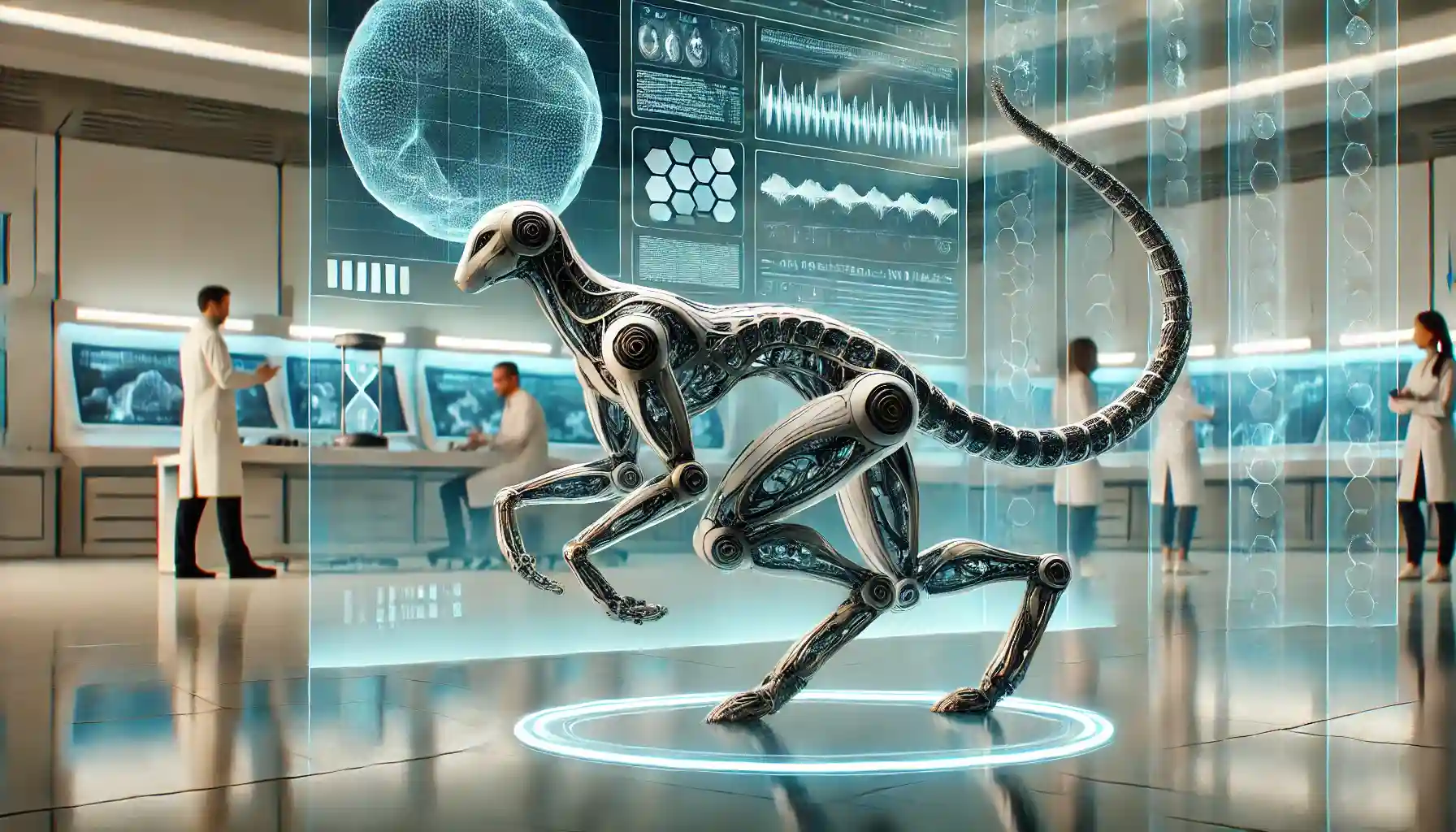In the quest to create more efficient, adaptable, and intelligent machines, engineers and scientists are increasingly turning to nature for inspiration. Bio-inspired robotics—a field that draws design principles and functionalities from living organisms—is revolutionizing the way robots interact with their environments and perform complex tasks. By mimicking the structures, behaviors, and systems found in nature, bio-inspired robots achieve enhanced performance, flexibility, and sustainability, opening new horizons across various industries.
This article delves into the fundamentals of bio-inspired robotics, explores the key principles and inspirations from nature, examines cutting-edge technologies, highlights diverse applications, and discusses the challenges and future trends shaping this innovative field.
Table of Contents
Introduction to Bio-inspired Robotics
Bio-inspired robotics is an interdisciplinary field that combines biology, engineering, and computer science to develop robots that emulate the structures, functions, and behaviors of living organisms. Unlike traditional robots, which often rely on rigid frameworks and linear programming, bio-inspired robots incorporate flexibility, adaptability, and resilience inherent in biological systems. This approach not only enhances the robots’ ability to perform complex tasks but also makes them more efficient and sustainable.
Why Bio-inspired Robotics Matters
As technological demands grow, so does the need for robots that can operate seamlessly in diverse and unpredictable environments. Bio-inspired robotics offers solutions by leveraging millions of years of evolutionary optimization present in nature. By studying and replicating natural mechanisms, engineers can create robots that are better suited for real-world challenges, from navigating uneven terrains to performing delicate medical procedures.
Key Principles and Inspirations
Nature as a Blueprint
Nature serves as an invaluable source of inspiration for robotics. The vast array of life forms offers a plethora of design solutions optimized for survival, efficiency, and adaptability. By understanding and applying these biological principles, robotics can achieve breakthroughs in performance and functionality.
Common Biological Inspirations
- Insect-Inspired Robots
- Locusts and Ants: Mimicking the swarming behavior and efficient locomotion of insects to develop robots that can work collectively to perform large-scale tasks.
- Beetles: Emulating the robust exoskeletons and agile movements for creating durable and versatile robots.
- Mammal-Inspired Robots
- Humans and Primates: Designing robots with dexterous limbs and advanced sensor systems for tasks requiring fine manipulation and interaction.
- Cats and Dogs: Incorporating balance and adaptive movement strategies to navigate complex environments with ease.
- Aquatic Animal-Inspired Robots
- Fish and Octopuses: Developing flexible, streamlined bodies and tentacle-like appendages for underwater exploration and manipulation.
Technologies and Methods
Materials and Actuators
Bio-inspired robots often utilize soft materials and flexible actuators that allow for smooth and adaptive movements, closely resembling biological tissues. Advances in soft robotics have enabled the creation of robots that can bend, stretch, and adapt their shape, enhancing their ability to interact safely and effectively with their surroundings.
- Silicone-Based Materials: Provide elasticity and durability, essential for mimicking muscle movements.
- Shape-Memory Alloys: Allow robots to return to their original shape after deformation, enabling repetitive and precise actions.
Sensors and Control Systems
To emulate the sensory capabilities of living organisms, bio-inspired robots integrate a variety of sensors and advanced control systems:
- Vision Systems: Cameras and LiDAR sensors replicate the visual processing found in animals, enabling object recognition and navigation.
- Touch Sensors: Tactile sensors mimic the sense of touch, allowing robots to detect pressure, texture, and temperature.
- Proprioception: Internal sensors that provide feedback on the robot’s own position and movement, akin to muscle and joint sensors in animals.
Artificial Intelligence (AI) and machine learning algorithms process sensor data, enabling robots to make informed decisions and adapt to changing environments dynamically.
Applications of Bio-inspired Robotics
Medical Robotics
Bio-inspired robots are revolutionizing the healthcare industry by enhancing precision and reducing invasiveness in medical procedures.
- Surgical Robots: Mimicking human dexterity to perform minimally invasive surgeries with higher accuracy and reduced recovery times.
- Rehabilitation Robots: Assisting patients in regaining mobility and strength through adaptive and responsive support systems.
Search and Rescue Operations
In disaster scenarios, bio-inspired robots can navigate rubble, detect survivors, and perform tasks that are too dangerous for human rescuers.
- Snake Robots: Flexible and agile, capable of squeezing through tight spaces to access victims.
- Bird-Inspired Drones: Equipped with advanced sensors for aerial reconnaissance and real-time data collection.
Agricultural Automation
Agricultural robotics benefits from bio-inspired designs to improve efficiency and sustainability in farming practices.
- Pollination Robots: Emulating bee behaviors to assist in the pollination of crops, addressing the decline in natural pollinator populations.
- Weeding Robots: Identifying and removing weeds with precision, reducing the need for chemical herbicides.
Consumer and Service Robots
In everyday environments, bio-inspired robots enhance convenience and assist with routine tasks.
- Assistive Devices: Wearable exoskeletons that support mobility for individuals with disabilities.
- Household Robots: Robots that mimic natural movements to perform cleaning, cooking, or companionship tasks effectively.
Benefits of Bio-inspired Robotics
- Enhanced Adaptability
- Robots inspired by nature can adapt to a wide range of environments and tasks, increasing their versatility and applicability.
- Improved Efficiency
- Mimicking biological processes often leads to more efficient energy use and task execution, reducing operational costs and resource consumption.
- Increased Safety
- Flexible and adaptive designs minimize the risk of injury in human-robot interactions, making them safer for collaborative workspaces.
- Sustainability
- Bio-inspired robots often incorporate eco-friendly materials and energy-efficient mechanisms, contributing to sustainable technological advancements.
- Innovation and Creativity
- Drawing inspiration from the complexity and ingenuity of natural systems fosters innovative solutions and creative problem-solving in robotics design.
Challenges and Future Directions
Technical Challenges
- Complexity of Biological Systems: Replicating the intricate functionalities of living organisms is technically challenging and requires multidisciplinary expertise.
- Material Limitations: Developing materials that can mimic the flexibility and strength of biological tissues remains a significant hurdle.
- Energy Efficiency: Balancing power consumption with performance is crucial for creating autonomous and long-lasting robots.
Ethical and Societal Considerations
- Job Displacement: As bio-inspired robots become more capable, concerns about automation replacing human jobs persist, necessitating strategies for workforce transition and reskilling.
- Privacy and Security: Advanced sensors and AI systems in robots raise issues related to data privacy and cybersecurity, requiring robust safeguards.
- Human-Robot Interaction: Ensuring that robots interact safely and harmoniously with humans involves addressing social acceptance and trust.
Future Trends
- Advanced AI Integration
- Enhanced machine learning algorithms will enable bio-inspired robots to learn from their environments and improve their performance autonomously.
- Collaborative Robotics
- Future robots will work more seamlessly alongside humans, complementing human skills and enhancing overall productivity.
- Biohybrid Systems
- Combining biological tissues with robotic systems to create biohybrid robots that can perform complex tasks with unprecedented precision and adaptability.
- Sustainable Design
- Emphasizing eco-friendly materials and energy-efficient technologies to create robots that are not only effective but also environmentally responsible.
- Personalized Robotics
- Developing robots tailored to individual needs and environments, enhancing their utility and effectiveness in various applications.
Conclusion
Bio-inspired robotics stands at the forefront of technological innovation, bridging the gap between biological intelligence and mechanical efficiency. By emulating the remarkable adaptability, resilience, and functionality of living organisms, bio-inspired robots are transforming industries ranging from healthcare and agriculture to search and rescue and consumer services. While challenges in replicating complex biological systems and addressing ethical concerns remain, ongoing advancements in materials science, AI, and sensor technology continue to propel the field forward.
As bio-inspired robotics evolves, it promises to create more intelligent, efficient, and sustainable machines that not only augment human capabilities but also contribute positively to society and the environment. Embracing the lessons from nature, the future of robotics is poised to be as dynamic and diverse as the living world it seeks to emulate.
For more in-depth information, research findings, and the latest advancements in bio-inspired robotics, visit the Bio-Inspired Robotics Laboratory at Harvard University. This resource offers comprehensive insights into cutting-edge projects, publications, and developments shaping the future of robotics inspired by nature.

